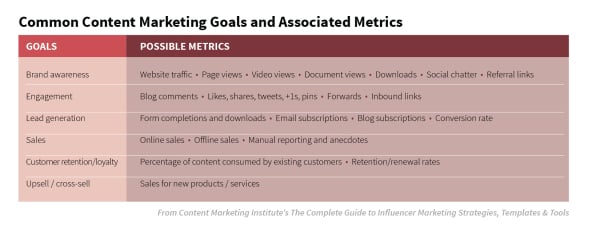A Marketing quota? Yes. If you don’t already have one, it’s time to start thinking about how you will hold Marketing accountable for sales growth. The complex buying process has spawned a need for Sales and Marketing to work together to generate more leads and convert those leads into sales opportunities. Both sides support each other as they work towards measurable goals.
It’s a complicated concept for teams to grasp if they’ve never assigned Marketing a quota before. And your Marketing team may not be happy about it at first. But the profitability of your business is dependent on the ability of Sales and Marketing to work together. So get your teams on board with this process or get ready to jump ship.
Here’s a look at how the process of smarketing quotas should work. (Sales + Marketing = smarketing)
Establish quotas
The process starts with established quotas. Marketing and Sales are given quotas and both understand how many deals must be won and at what average price in order to meet their quotas. Let’s look at an example.
Sales is given a quota of $50,000,000. The Marketing Contribution is 25%, so in dollars that translates to a Marketing Quota of $12,500,000. If the average size of a deal is $120,000, we know that 104 deals need to be won to make this quota. This is just one example of how Marketing can be held accountable with real numbers that add up to real dollars. It’s also beneficial for Marketing to view business from the Sales side. It adds context to the strategies and activities they do to enable sales.
Executing marketing strategies
Once quotas have been established, Marketing has a better idea of the activities they need to execute on to hit their goals. In order for Marketing to hit their quota, Sales needs to hit their own. Enter DemandGen and LeadGen. Both are Marketing activities using inbound marketing (and some outbound marketing) tactics to generate brand awareness, thus driving traffic, generating leads, and converting those leads to customers.
DemandGen focuses on generating brand awareness for your business. This is done by offering informative, top of the funnel (TOFU) content that gives insights into your industry and other high-level topics. It is different from LeadGen because your goal is not to generate quantities of leads, but to generate quality leads. These leads are generated by prospects who read your powerful content (of which you are the subject matter expert), find it useful, and want more information. They are prompted to take action by clicking on your strategic calls-to-action of “Contact Us” or “Learn More”. These leads were brought to you through pure inbound marketing tactics.
LeadGen, on the other hand, focuses on generating as many leads as you can through form submissions on TOFU to middle of the funnel content. The goal of LeadGen is simply to produce leads. That is why content created with the goal of LeadGen in mind is gated by strategic forms that capture your persona’s contact information so that you can target them after. LeadGen still uses inbound marketing tactics, such as blogs and eBooks, to achieve leads, but they are targeted differently than DemandGen offers.
How Marketing Leverages Content to Enable Sales
With the goals of LeadGen and DemandGen in mind, Marketing creates content offers that are geared to the goal of each specific strategy with the different stages of the buyer’s journey in mind. This helps Sales better qualify leads that come in. Let’s look at an example.
Marketing wants to create a MOFU offer for LeadGen. They create an eBook titled “5 Ways To Increase Conversions Using Content Marketing”. The eBook is gated by a form that asks the prospect to fill out their contact information in order to download the book. If this eBook were created for DemandGen, it would not be gated by a form submission, but rather would have a call-to-action inviting the prospect to “Learn More”.
So, while Marketing creates content for both DemandGen and LeadGen offers, Sales is armed with leads that are pre-qualified based on the type of content they downloaded. This helps them decide how to proceed with their sales process. If a prospect downloaded a case study on another customer’s experience, they are most likely sales-ready and Sales can initiate the appropriate conversation with them.
Are you convinced?
By now you should understand how important the relationship between Sales and Marketing is. The overwhelming amount of data available from marketing and sales automation software enables both to do their jobs better, while collaborating with each other about their firsthand experience.
Measuring Marketing KPIs
Actually tracking the success of marketing strategies is harder than tracking the success of sales—they either close a deal or they don’t; it’s a win or a loss. Marketing ROI is measured by several KPIs that are less tangible than closing a deal. Take a look at this chart from the Content Marketing Institute below. Based on the goal of the marketing activity, different metrics are outlined to measure its’ success. Armed with this data, Marketing is able to detect which blog topics performed better than others, or which eBooks were shared more often than others. Each metric guides a more thoughtful Marketing strategy that ultimately enables Sales to close deals.

When you look at it that way, smarketing is really a cycle. Marketing enables sales, sales converts leads into customers, both teams hit their quotas, and the cycle repeats itself. In today’s buying environment, this relationship is key. Arm your teams with the tools they need to work together successfully and your bottom line (and your CEO) will thank you.



